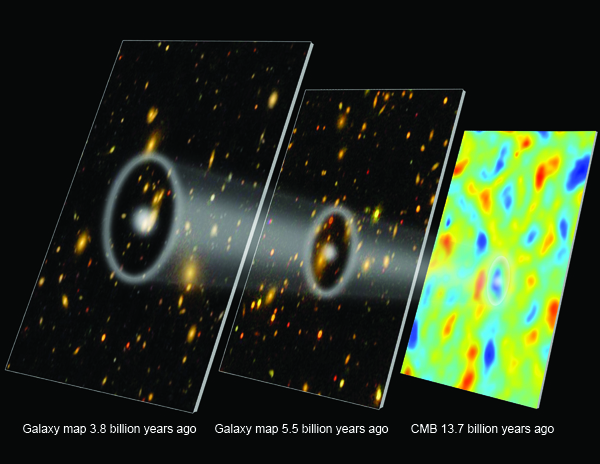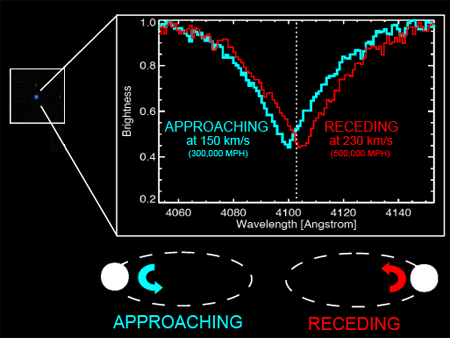Building on the legacy of the Sloan Digital Sky Survey (SDSS), the SDSS-III’s Baryon Oscillation Spectroscopic Survey (BOSS) is currently mapping the spatial distribution of the most massive galaxies in the Universe. SDSS-III astronomers have been using the galaxy spectra obtained by these experiments to infer important physical information about the stars and the gas in these systems, which illuminate how galaxies formed and evolved over the history of the Universe.
In a recent paper, BOSS scientists from the University of Wisconsin, the Max Planck Institute for Astrophysics, Johns Hopkins University, along with other members of the SDSS-III team, studied the masses and ages of around 300,000 massive galaxies at redshifts ranging from 0.45 to 0.7, corresponding to a time when the Universe was 60 percent of its present age of 13.7 billion years. These galaxies all have stellar masses larger than 100 billion times that mass of our Sun (10^11 Msun), making this the largest sample of massive galaxies with spectra to have been analyzed thus far.
“Evolution of the Most Massive Galaxies to z=0.6: I. A New Method for Physical Parameter Estimation”
Yan-Mei Chen et al.
http://arxiv.org/abs/1108.4719

The above figure from the paper shows the fraction of galaxies with recent star formation as a function of galaxy mass. The solid red,black and blue lines show the fraction of galaxies that have formed more than 5, 10, and 15% of their stars in the last billion years as a function of stellar mass. These results are for galaxies with median redshift z=0.1 in the SDSS low-redshift MAIN sample. The dashed red,black and blue lines show the same thing for galaxies with median redshift z=0.5 in the BOSS sample. Note the flattening and potential increase in the star formation rate for the most massive galaxies at z=0.5.
Massive galaxies are thought to represent the end-point of galaxy evolution. Small galaxies form first and then merge to create larger galaxies. Each merger should trigger a burst of star formation. At the present day the most massive galaxies we see around us are no longer forming new stars, which has been somewhat surprising because there are still galaxies merging today. But by looking back 5 billion years, BOSS astronomers were able to see massive galaxies still assembling and forming new stars.
This suppression of star formation in massive galaxies seen at the present day has been postulated to be due to several different exotic mechanisms that heat the gas and prevent it from forming stars. Examples range from giant explosions powered by material accreting onto central black holes of a billion or more solar masses, to megaparsec-scale jets of charged particles traveling at relativistic speeds, which penetrate and heat the gas surrounding the galaxies. The new results from SDSS-III indicate that these exotic mechanisms may have a much harder time stopping star formation in massive galaxies at higher redshifts.
The new technique and the unprecedentedly large galaxy sample, allowed the team to conclude that the fraction of the most massive galaxies with young stars has decreased by a factor of 10 over the last 4 billion years (see Figure) of the 13.7-billion year lifetime of the Universe. At redshift 0.5 (8-9 billion years after the Big Bang), more than 10% of all galaxies with stellar masses of around 200 billion solar masses have experienced a significant recent episode of star formation. These results are at odds with previous claims that the stars in massive galaxies all formed only 2-3 billion years after the Big Bang. The results are also exciting, because next generation X-ray satellites will be able to detect the gas as it cools and forms stars in these massive galaxies and next generation radio surveys will track how energetic particles propelled by black holes deposit their energy into this gas. Current speculation about exotic mechanisms will then be transformed into hard science.
Written by Guinevere Kauffmann
Edited by Michael Wood-Vasey
The paper submitted to Monthly Notices of the Royal Astronomical Society is available at:
http://arxiv.org/abs/1108.4719
And more details can be found at:
http://www.mpa-garching.mpg.de/mpa/research/current_research/hl2012-1/hl2012-1-en.html

















